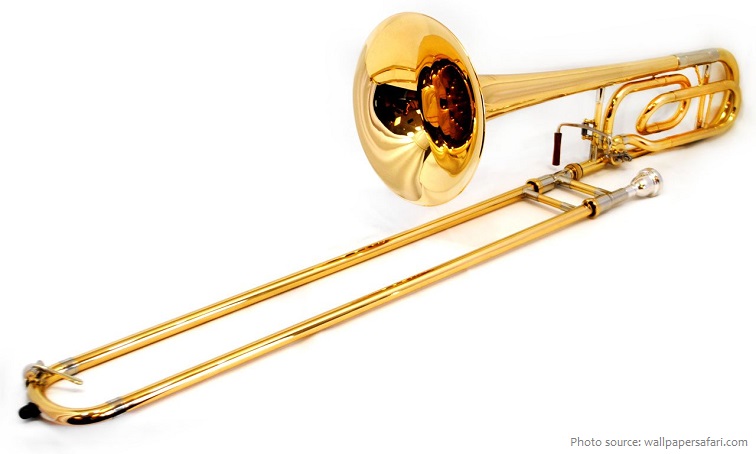
The trombone is a musical instrument in the brass family.
As with all brass instruments, sound is produced when the player’s vibrating lips (embouchure) cause the air column inside the instrument to vibrate.
Unlike most other brass instruments, which have valves that, when pressed, alter the pitch of the instrument, trombones instead have a telescoping slide mechanism that varies the length of the instrument to change the pitch.
However, many modern trombone models also have a valve attachment which lowers the pitch of the instrument. Variants such as the valve trombone and superbone have three valves similar to those on the trumpet.
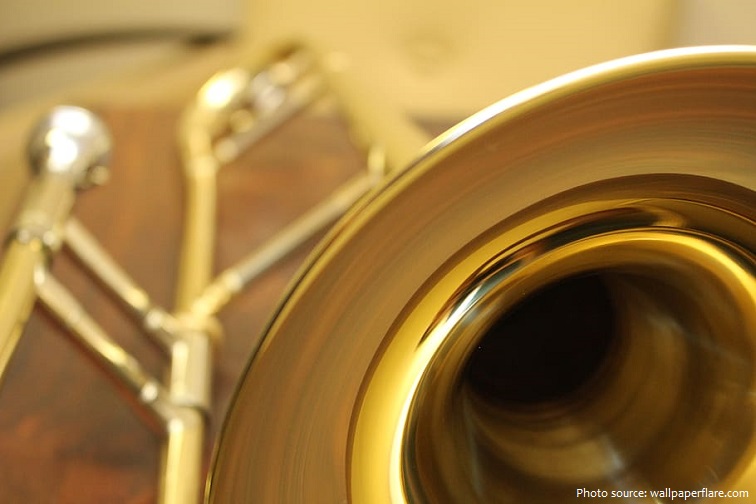
Trombones and trumpets evolved from the medieval buisine, a brass wind instrument that originated in southern Italy in the 11th century.
The modern trombone originated in Burgundy in the middle of the 15th century. Efforts to shorten the slide lengths of the S-shaped slide trumpet resulted in the invention of the U-shaped slide.
The trombone was used extensively across Europe, from its appearance in the 15th century to a decline in most places by the mid-late 17th century.
Trombones have been used in a variety of situations, including the courts of aristocrats, churches, and in military bands.
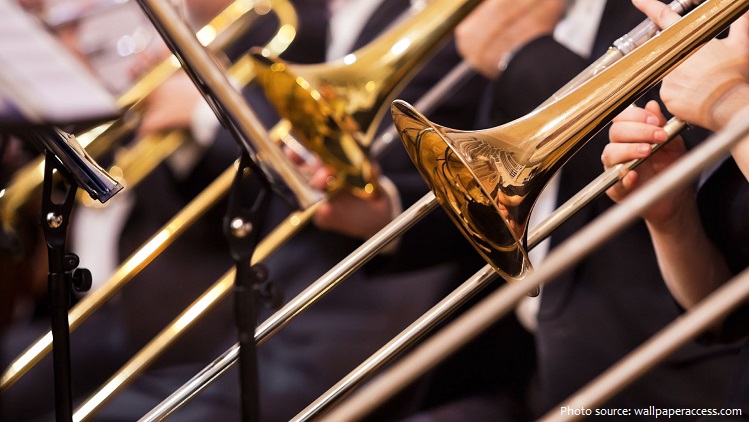
With trumpeters, trombonists in German city-states were employed as civil officials. As officials, these trombonists were often relegated to standing watch in the city towers but would also herald the arrival of important people to the city. This is similar to the role of a military bugler and was used as a sign of wealth and strength in 16th century German cities.
Trombones have been a part of the large wind band since its inception as an ensemble during the French Revolution of 1791.
Until the 18th century the trombone was called a “saqueboute“ (in French) or a “sackbut“ (in English). Although opinions vary on the etymology, some sources suggest that the word comes from the French word “sacquer,” which means to draw out (a sword or the like). The instrument may have gotten its name due to the action of sliding the tube out to lengthen it resembling a swordsman drawing a sword from a scabbard.
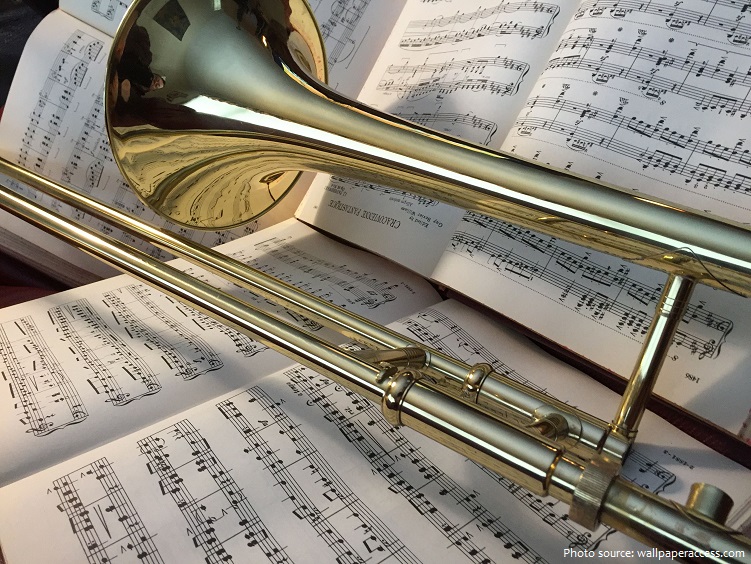
The current name “trombone” derives from Italian Tromba (trumpet) and -one (a suffix meaning “large”), so the name means “large trumpet”.
Trombones have a range similar to that of the human voice and are capable of producing awe-inspiring harmonies during concerts.
Beethoven was the first to use trombones-until that point seen as religious instruments-in a secular symphony. “Symphony No. 5 in C minor, Op. 67” (“Fate”), first played in 1808, was the first symphony in which a trombone was used.
Beethoven would go on to use trombones again in “Symphony No. 6 in F major, Op. 68” (“Pastoral Symphony”) and “Symphony No. 9 in D minor, Op. 125” (“The Choral”), building a foundation for the trombone to stand as a fixture in orchestras in the 19th century.
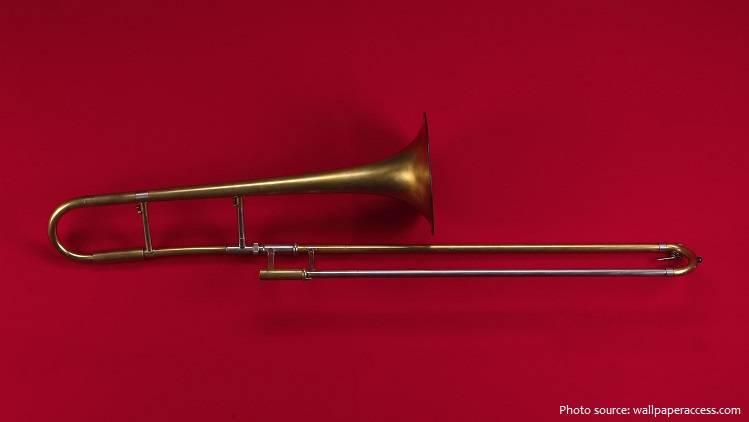
In the Romantic era, Leipzig became a center of trombone pedagogy. The trombone began to be taught at the Musikhochschule founded by Felix Mendelssohn Bartholdy. The Paris Conservatory and its yearly exhibition also contributed to trombone education. At the Leipzig academy, Mendelssohn’s bass trombonist, Karl Traugott Queisser, was the first in a long line of distinguished professors of the trombone.
Queisser championed and popularized Christian Friedrich Sattler’s tenorbass trombone during the 1840s, leading to its widespread use in orchestras throughout Germany and Austria.
Sattler had a great influence on trombone design. He introduced a significant widening of the bore (the most important since the Renaissance), the innovations of Schlangenverzierungen (snake decorations), the bell garland, and the wide bell flare—features still found on German-made trombones that were widely copied during the 19th century.
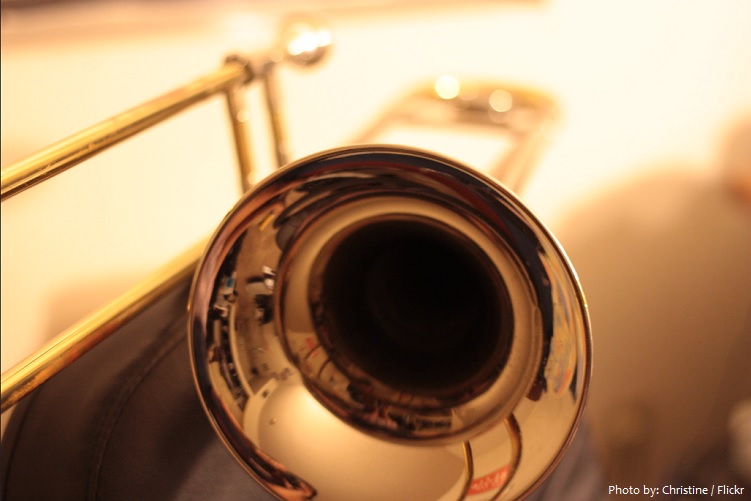
In the 1900s the trombone assisted the bass or tuba player’s job of outlining chords for the other instruments by playing a bass line for the higher-pitched instruments to improvise over. It was not until the swing era of the mid-1920s that the trombone began to be used as a solo instrument.
Changes in construction have occurred during the 20th century, such as the use of different materials – increases in mouthpiece, bore, and bell dimensions – and in types of mutes and valves. Despite the universal switch to a larger horn, many European trombone makers prefer a slightly
smaller bore than their American counterparts.
The trombone can be found in symphony orchestras, concert bands, marching bands, military bands, brass bands, and brass choirs. In chamber music, it is used in brass quintets, quartets, or trios, or trombone trios, quartets, or choirs. The size of a trombone choir can vary from five or six to twenty or more members. Trombones are also common in swing, jazz, merengue, salsa, R&B, ska, and New Orleans brass bands.
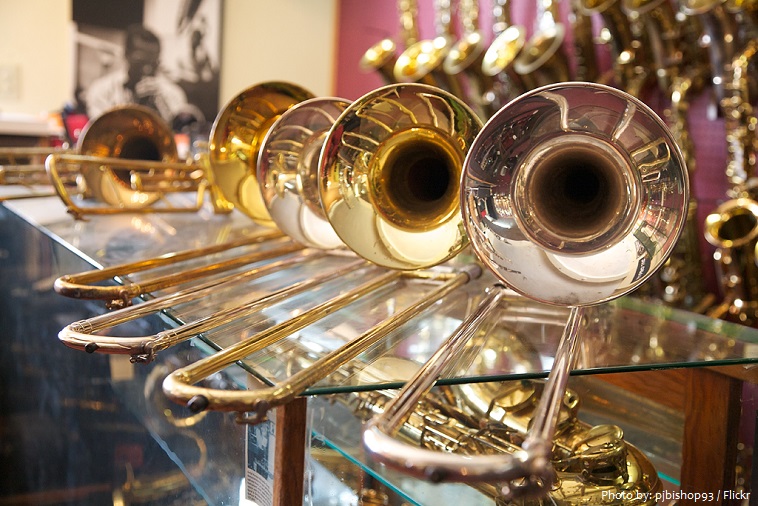
A person who plays the trombone is called a trombonist or trombone player.
The largest trombone ensemble consisted of 368 musicians at an event organized by Arena Stage and FAME (both USA) at Nationals Park in Washington, D.C., USA, on 1 June 2012.
Beginner trombones usually range in cost from $400 to $1,500. Intermediate, or step-up trombones usually range in cost $1,400 to $2,800 and entry level pro trombones (still largely played by advanced students) around $2,800 and up.